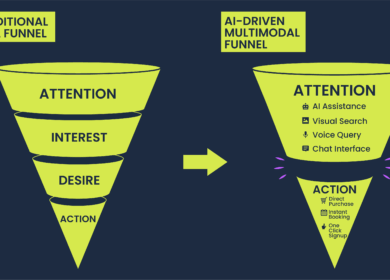
For Japan’s first female prime minister, Sanae Takaichi, “crisis management” is a watchword – but not in the way you might think.
For her it constitutes aggressive investment in industry sectors seen as vital to Japan’s future, including AI, quantum technology, semiconductors, blockchain and biotechnology, and is part of a plan to inject new life into the country’s economy. The government is reportedly looking to technology such as IoT, AI, cloud and robotics to help address regional disparities and revitalize industry and agriculture nationwide.
Takaichi’s apparent enthusiasm for transformative industries comes from direct experience. Her political career includes stints as Minister of State for Science and Technology, Innovation, and Space Policy. Under the late former prime minster Shinzo Abe, she was responsible for drawing up Innovation 25, a framework for science and technology investment aimed at “creating a better Japan through innovation” by 2025.
There has been progress towards that goal – the revival of Kumamoto as a centre for semiconductors is a prime example – but there is clearly still far to go. There are never any certainties when it comes to new political leadership, but it’s reasonable to think efforts like these will receive renewed attention.
Opportunity amid nationalism
Takaichi appears to have struck a positive chord with US president Donald Trump, which bodes well for relations between the two countries. But she is also a nationalist, and the focus of investment will be on protecting and nurturing domestic technologies from the perspective of economic security.
A recent Bloomberg story highlighted what this could mean for international companies. While Japan wants to increase its use of solar power, Takaichi takes a dim view of the solar panels currently in use because they are made in China as opposed to Japan.
Of course, China occupies a distinct spotlight for geopolitical reasons, but Japan-first policies are likely to be a key feature of Takaichi’s leadership. The focus will be on domestic capabilities and where possible, technological independence. As an example, a committee on foreign investment in Japan is in the offing that could lead to stricter investment screening in strategic fields. Multinationals could even face extra regulatory burden, licensing and export control issues and data localization requirements.
None of this need preclude international tech players from being a valued part of the country’s innovation push. This is especially true for those in the semiconductor and advanced materials space willing to co-invest or partner with Japanese companies. The picture also looks positive for AI, data infrastructure and cloud businesses
Favor, and ultimately success, are likely to depend on how well businesses map their offerings to the government’s strategic priorities and communicate their contribution to Japan’s national resilience and innovation ecosystem.
This means being ready to build stories around everything from job creation, supply chain reinforcement and capability building to localization, data governance and role in the security ecosystem. Consumer tech product and service providers are likely to face fewer strategic obstacles but also fewer preferential incentives.
Actions for inclusion
Whatever sector you operate in, showing that you are in step with Takaichi’s “innovation for society” agenda will be essential. Here are some other actions that should stand you in good stead for what comes next:
- If you haven’t already, form a Japan-specific narrative and communications plan. Aspects to highlight include local R&D and talent development, partnerships with Japanese universities or SMEs, and contribution to Japan’s strategic supply chains.
- Take the initiative to engage with the government early. Seek out the most relevant ministries, e.g. Science & Technology, METI, Digital Agency and build engagement around support for Japan’s innovation and resilience goals.
- Assess localisation-related risks. Determine how your supply chain, manufacturing footprint, IP or licensing arrangements and data handling practices will stand up to increased scrutiny for strategic alignment or national security. Adjust strategy and communications accordingly.
- Be alert to policy changes. Keep a close eye on policy around legislation, subsidies, procurement, tax and energy. Be prepared to adjust messaging if necessary.
- Convey continuity and global context. Localizing your story for Japan is important but so is maintaining reference to global capabilities and how Japan fits into the network.
It pays to be realistic. The initial signals from Takaichi’s leadership are positive for tech and innovation, but Japan’s structural challenges of demographics, debt and coalition fragility are not going away. There is a worsening talent crunch in fields like AI, data science and cybersecurity, and education system reform is a must if Japan is to make good on its technological vision longer term.
Future talent development is likely to work best as a collaboration between the private and public sectors, and this is an area where international companies could play a meaningful role. Similarly, while protecting domestic technology, Japan stands to benefit from cooperative technology exchange with friendly countries. Transparent rules will be key, including from the perspective of promoting investment.
The new prime minister’s stance may appear tough, but a leader who puts technological innovation at the core of national strategy warrants close attention. As Japan enters the era of “Sanaenomics”, be alert to opportunity – and make it clear that you’re here not just for your own benefit, but to support Japan’s “crisis management” efforts and growth vision.
To find out more about how we help innovative tech and B2B brands grow in Japan and APAC, get in touch.

